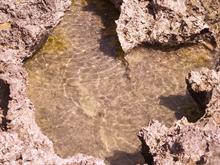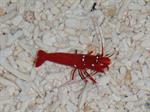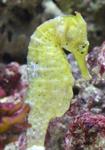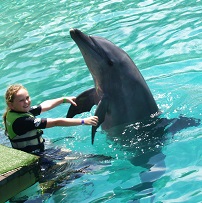 MARINE STUDIES DISTANCE LEARNING COURSE
MARINE STUDIES DISTANCE LEARNING COURSE
"A fascinating insight into marine life"
- Learn to identify a wider range of marine organisms
- Learn about the physiology and anatomy of marine animals
- Work in ecotourism or marine industries, start a business or increase your employability
- Self paced, 100 hour course
COURSE STRUCTURE AND CONTENT
There are 10 lessons and 10 Assignments; as follows:
- Introduction and Simple Organisms
- Terminology
- Classification or Taxonomy
- Simple and microscopic organisms
- Types of protazoans
- Ciliates
- Flagellates
- Algae
- Bacteria
- Plankton
- Sponges
- Marine Plants
- Terminology
- Overview of seaweeds
- Chlorophyta (Green Algae)
- Phaeophyta (Brown Algae)
- Rhodophyta (Red algae)
- Marine fungi
- Marine flowering plants: sea grasses, mangroves, salt marsh plants
- Cnidarians & Worms:
- Terminology
- Anemones
- Jellyfish
- Crustaceans
- Worms: flatworms, ribbon worms, round worms
- Segmented worms. peanut worms, giant tube worms
- Arthropods
- Introduction
- Characteristics
- Prawns and shrimps
- Deep water prawns in the atlantic
- The common prawn (Palaemon serratus)
- Giant red shrimp
- Pink prawn
- Shallow water prawns
- Indian white prawn
- Tiger prawn
- Kuruma shrimp
- Green tiger prawn
- Peneaeus notialis and others

- Barnacles
- Crabs
- True crabs
- Hermit crabs
- Molluscs
- Introduction and classification
- Characteristics
- Gastropods
- Whelk
- Bivalves
- Mussels and oysters
- Cocles
- Green lipped mussels, common mussel, mediterranean mussel, and others
- Pacific oyster, European flat oyster, Olympia oyster
- Nudibranchs (open gilled sea slugs)
- Cephalapods
- Octopuses
- Biology of the octopus
- Cuttlefish
- Squid: classification and biology
- Oegopsida squid and other squid
- Chitons
- Echinoderms:
- Terminology
- Characteristics of Echinoderms
- Starfish
- Sea Urchins
- Sea Cucumbers
- Non Bony Fishes:
- Lampreys
- Hagfishes
- Sharks
- Rays
 Bony Fishes I
Bony Fishes I
- Introduction
- Terminology
- Structure and biological characteristics
- Classification
- Bony Fishes II
- Families within Oesteichyes
- Mesopelagic fish: distribution, life historyand ecology
- Clupeoids (eg. sardine, herring)
- Tunas: types, life history, feeding, predators
- Mackerels
- Bill Fish (Marlins, spear fish, sail fish)
- Marine Mammals and Higher Animals
- Marine reptiles: sea snakes, sea turtles, crocadylians
- Pinnipeds (seals walruses, Seal lions
- Dugongs and Manatees
- Whales and Dolphins
- Sea birds
Each lesson culminates in an assignment which is submitted to the school, marked by the school's tutors and returned to you with any relevant suggestions, comments, and if necessary, extra reading.
COURSE DURATION: 100 hours
COURSE AIMS
- Describe the variety and nature of microscopic animals which occur in marine environments.
- Describe the variety and nature of a range of different types of marine plants.
- Describe the variety and nature of a range of different types of cnidarians and marine worms.
- Describe the variety and nature of arthropods in marine environments.
- Describe the variety and nature of Molluscs in marine environments.
- Differentiate between different classes of Echinoderms and selected families within those classes.
- Describe the shared characteristics and distinguishing features of a selection of different species of non-bony fish.
- Describe characteristics of bony fish, including anatomy, physiology and behaviour.
- Differentiate between different families of bony fish.
- Describe the taxonomic characteristics of groups of marine animals including reptiles, birds and mammals.
 WHAT THE COURSE COVERS
WHAT THE COURSE COVERS
Some of these activities are:
- Draw a table to compare three different phyla of marine protists.
- Explain the differences between sponges, krill and plankton.
- Produce a table that compares the characteristics of the three different types of algae.
- Explain the difference between seaweed and seagrass.
- How important are marine plants to the survival of marine animals?
- Explain features that distinguish different types of worms apart, including:
- Flatworms
- Ribbon Worms
- Segmented Worms
- Peanut Worms
- Present a report on research on the Cnidarians.
- Explain the formation of coral reefs. Why are they considered one of the most biologically productive environments.
- Explain the advantages of the arthropod’s body structure compared to the structure of the less complex animals studied so far in this course.
- Research the living environments of one local arthropod and consider how its body structure and feeding mechanism are adapted to its environment.
- Discuss limitations in lifestyle and behaviour might be imposed by the structure of arthopods.
- Differentiate between cephalopods, gastropods and bivalves.
- Describe the feeding and defence mechanisms of two different molluscs.
- Describe the advantages and disadvantages of the echinoderm’s radially symmetrical body.
- Describe the feeding, breeding and defence characteristics of echinoderms.
- Select 3 echinoderms and describe their method of reproduction.
- Describe the sensory and behavioural adaptations that sharks and rays use for defence and feeding.
- Discuss whether sharks deserve their reputation as maneaters.
- Explain the the main differences between sharks and rays, and the main benefits to these creatures of these differences.
- Describe the relationship between a particular kind of lamprey (ideally, one found locally) and its host, considering who benefits and/or who does not, and why.
- List three families of local bony fish.
- Briefly describe the biological characteristics of three fish families:

- structure
- feeding
- colouration
- reproductive
- defence mechanisms
- Discuss the behavioural characteristics of the three families you researched:
- territorial behaviour
- migration
- schooling
- reproductive behaviour
- Draw and describe the gills of bony fish, and explain their function.
- Identify families of fish characterised by their habit of sitting perched on their lower fins.
- Describe special adaptations of fish and other marine organisms that live in the mid to deep zones of the ocean.
- List the most significant bony fish that occur in your nearest marine waters, and briefly describe their marine environment.
- Research in detail 1 marine reptile and 2 marine mammals.
DOLPHINS, PORPOISES, TOOTHED WHALES
Dolphins and porpoises are actually types of toothed whales (Suborder Odontoceti).
In contrast to baleen whales, toothed whales have to actively pursue and catch their prey. To compensate for this need for a greater degree of agility and speed, their body size is normally much smaller than that of their baleen relatives. A majority of the toothed whales are relatively small such as the river dolphins and porpoises (more detail shown below).
They have teeth so that they can hold their prey of fish and squid. Unlike other mammals that have two sets of teeth during their lifetime, toothed whales only possess one set of teeth throughout their life. They also possess only one blowhole, unlike baleen whales that have two. As they do not possess vocal cords, all sounds are produced within the blowhole.
Another feature that distinguishes toothed whales from baleen whales is the use of a special system of sound seeing called echolocation. Given that visibility in the water column can be limited due to such factors as absorption or turbidity, they use echolocation to orient themselves in their environment and also to find their prey.
Sperm Whale (Physeter macrocephalus)
The sperm whale is one of the more well known toothed whales. This whale possesses the largest whale of any animal. The name “sperm whale” is termed for the milky-white substance that is found in the animal’s head. Mature males can grow to over 20 metres in length and in large males the head can account for 1/3 of the whale’s length. The sperm whale can inhabit a range of cold water and tropical oceans and seas.
Dolphins (Family Delphinidae)

There are just under 40 species of dolphin worldwide. They can vary greatly in size from 1.2m (40kg) in the Maui’s dolphin to 9.5m (10 tonnes) in the Orca. Dolphins are social animals, living in pods of up to 12 animals. Dolphins have adopted a range of feeding behaviours, however most feed on fish and squid. All use echolocation to find prey. The orca being the exception, feeding on other marine mammals. Some representatives of the dolphin family include:
- Bottlenose Dolphin (Genus Tursiops)
- Common Dolphin (Genus Delphinus)
- Atlantic Spotted Dolphin (Stenella frontalis)
- Killer Whale or Orca (Orincus orca)
- Amazon River Dolphin (Inia geoffrensis)
Porpoises (Family Delphinidae; Subfamily Phocoenidea).
These animals are similar to dolphins, though they differ physically by having shorter beaks and spade-shaped teeth. They live in all oceans, but stay closer to shore. They use echolocation to hunt, like the dolphins and prey on crustaceans, squid and fish. Examples include:
- Finless Porpoise (Neophocaena phocaeniodes)
- Harbour Porpoise (Phocoena phocoena)
- Spectacled Porpoise (Phocoena dioptrica)
- Dall’s Porpoise (Phocoenoides dalli)
WHAT NEXT?
Register to Study -Go to panel toward top of this page (right column)
or
Get Advice -Use our FREE COUNSELLING SERVICE to contact a tutor
CLICK TO CONTACT US